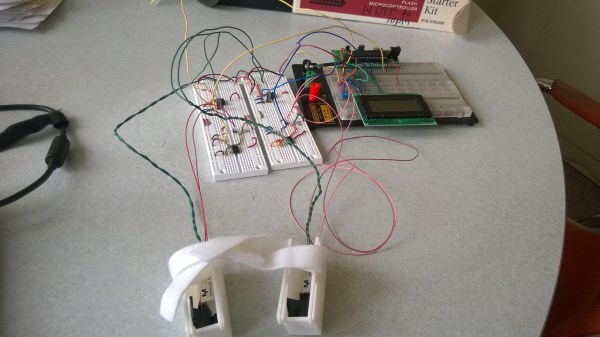The students over at Cornell’s School of Electrical and Computer Engineering have been hard at it again with their senior projects. This time, it’s the very tiny and portable drumset dubbed Drums Anywhere by its creators [Shiva Rajagopal] and [Richard Quan]. Since there are other highly portable instruments like roll-up pianos, they suppose there should be a portable drum kit that actually sounds like drums, and this ECE duo have hit the metaphorical and physical drum on the head… except that this project doesn’t actually use physical drums to make sound.
The project consists of two 3D-printed box-like sensors with velcro straps that can be attached to any drumstick-shaped object that might be lying around. Inside the box is a flex sensor and a tiny microphone which report the “beats” to a microcontroller when they strike another object.
On the software side, there are two sampled sounds stored in the microcontroller but they plan to add more sounds in the future. The microcontroller outputs sound to a pair of speakers, and the sensors are sensitive to force, so the volume can range from almost inaudible all the way up to [John Bonham]-style booms. This could also be theoretically expanded to include more than two “beat boxes” for extra sounds, or be wireless. The options are virtually limitless, although the team notes that they are limited by the number of interrupts and ADC converters on their particular microcontroller, an ATmega1284.
This is another interesting take on a having drumset without the drums, and definitely expands the range of what a virtual drum set can do. It’s also great to see interesting projects coming from senior design classes! Be sure to check out the video after the break.
Continue reading “Drums Anywhere!” →

















